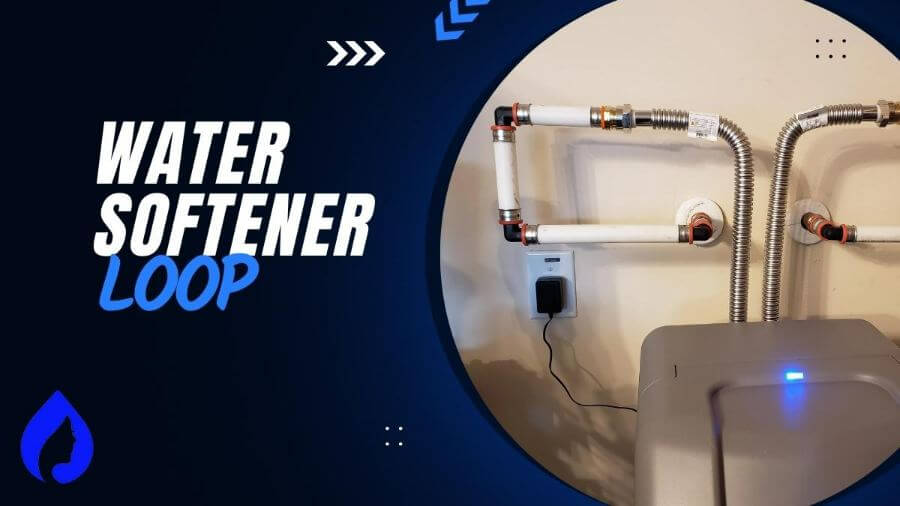
A water softener loop is a “U” shaped piping system that connects your home’s internal water distribution pipes to the water softener.
The main function of the loop is to provide ease of installation when you buy a new water softener for your home.
It separates indoor and outdoor water systems, ensuring all your crucial indoor water appliances receive soft water.
It also prevents water softener overuse by not delivering soft water to outdoor faucets.
So, should you install a soft water loop? Continue reading for an in-depth explainer on the water softener loop (Spoiler ahead!)
🚰How Does a Soft Water Loop Work?
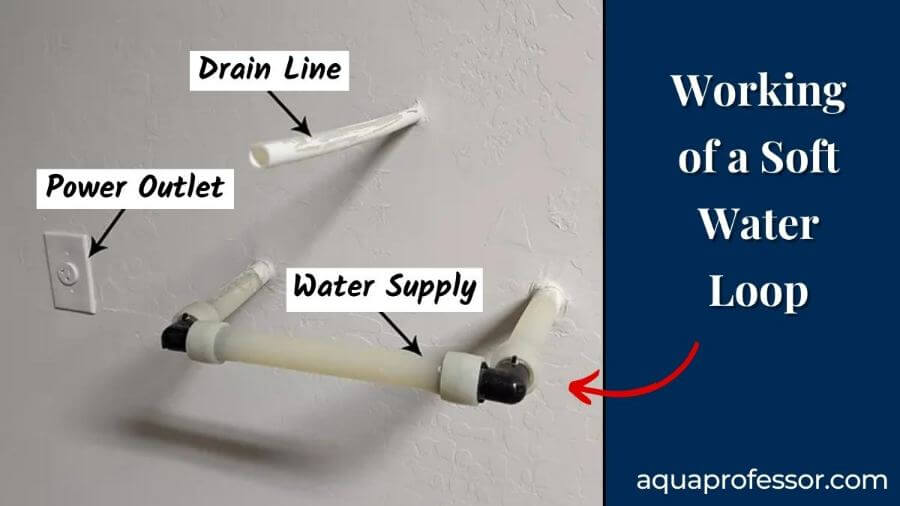
A soft water loop is a plumbing system designed to direct water from your home’s main water supply to the water softener before it’s distributed to indoor appliances. The water softener connects to the rest of your home’s plumbing system through the copper pipe.
This water softener loop ensures that only softened water gets delivered to indoor appliances.
In contrast, hard water is still available outdoors, like watering plants or washing cars where you don’t need soft water.
The loop is the ‘U’ shaped section of pipe that extends from the wall of a garage or closet, curves back, and then returns to the wall. The design allows easy access to turn the water softener system on or off.
🧑🔧Is a Water Softener Plumbing Loop Necessary?
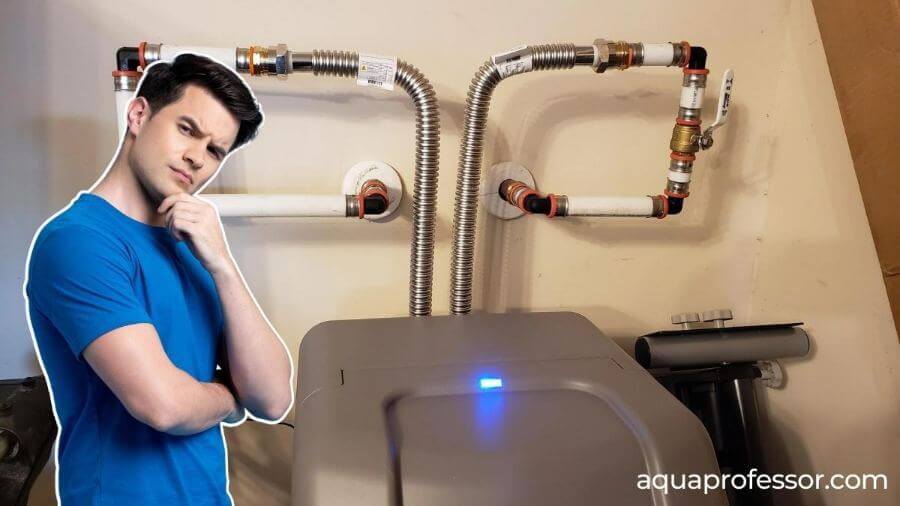
A dedicated plumbing loop ensures the water traveling through your incoming water supply line is soft water so that your indoor appliances don’t wear or tear due to hard water usage.
While installing a water softener without a loop at the main water line is possible, it can be expensive (on average, $400-$900).
The reasons behind the expense are:
It can overwork the softener as it has to deliver soft water even for outdoor faucets that don’t require softening (like watering plants).
Here are some benefits of having a water softener loop:
Also Read: How To Reset Your Water Softener
🔍How Do I Find My Water Softener Loop?
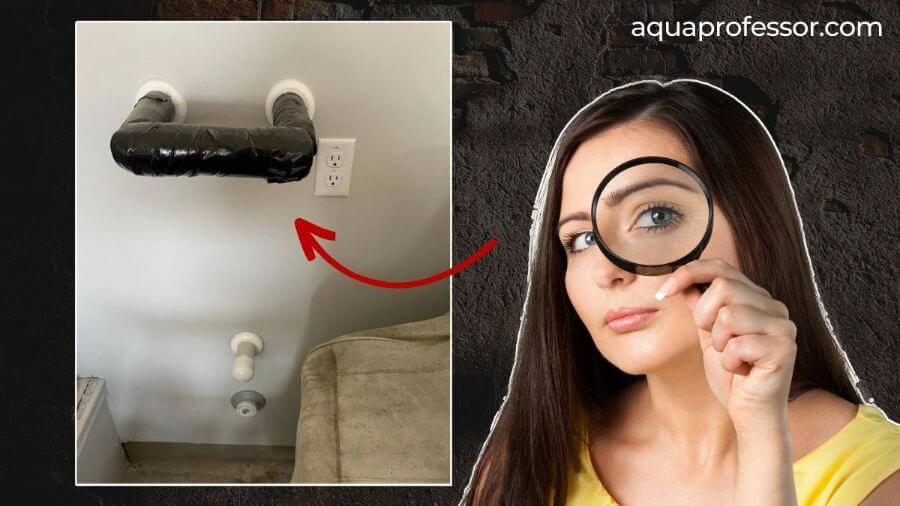
Here’s the spoiler I promised earlier:
Locating your water softener loop is easier than it might seem. It’s typically found near your water heater, with a 3/4″ copper line protruding from the wall.
It can also be found in your basement or your garage, or anywhere near the point of entry of your main water supply line.
Most modern homes have installed a loop, so there’s no need to worry about setting it up separately to reap its benefits.
If you live in a mild-weather region, you can find it installed near your water meter outside your house.
Also Read: When To Turn Off Water Softener
➰What Does a Water Softener Loop Look Like?
A water softener loop is usually a U-shaped copper pipe that connects your home’s internal water distribution pipes to the water softener.
➿What Size Is a Soft Water Loop?
The standard size for soft water loops is 3/4″ in diameter. This size accommodates the water flow without causing any significant pressure drop.
🔢How To Install A Water Softener Loop: Step-By-Step
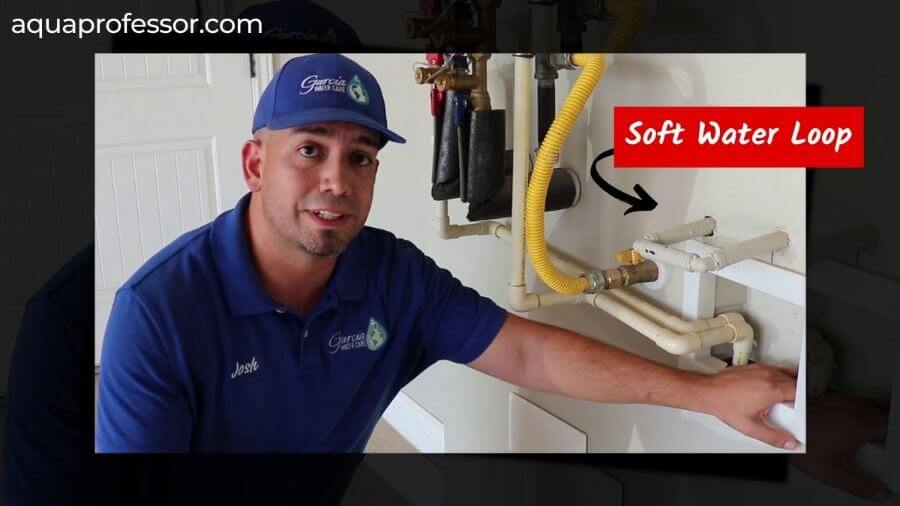
Installing a water softener loop can seem daunting, but it’s manageable with the right tools and guidance.
Here’s a step-by-step guide to help you through the process:
Note:
1. Remember that a water softener needs to be installed in a location with access to both water and electricity.
2. You need a drain line connected to a nearby drain for safe backwash discharge.
💰Water Softener Loop Installation Cost

Installing a water softener loop is a task that requires professional expertise due to the complexity of the process.
It’s generally not recommended for beginner DIY enthusiasts as it involves intricate plumbing work, and mishandling can damage your home’s plumbing system.
The cost of installing a water softener loop can vary significantly based on the complexity of the installation, local labor rates, and whether any additional plumbing work is needed.
On average, the installation cost for a water softener loop ranges from $600 to $2,000.
💡Pro Tip: Get multiple quotes from professional installers for the best value.
❓Soft Water Loop FAQs
Do water softener loops need maintenance?
No, soft water loops don’t require maintenance for almost 70-80 years because they become part of the home’s plumbing system when installed.
What are the benefits of a water softener loop?
Softener loops help separate indoor and outdoor water systems. Hence soft water supply is only delivered to indoor appliances rather than outdoors, where a soft water system is unnecessary.
Water softener loops also make softeners easy to install and reduce the cost of water softener installation.
Can I add a water softener loop in the garage?
Yes, water softener loops are often pre-plumbed in the garage, which is a common location to check for existing loops.
Can you install a water softener without a loop?
Yes, you can install a water softener without a loop by installing it on the main line. But it’ll be costlier:
1. In the short run, the main line installation cost is higher.
2. In the long run, you’ll overwork your softener to deliver soft water everywhere in the house, even where it’s not needed, like outdoors.
Should I add a water softener loop to my new house?
Yes, installing a water softener loop during the construction of a new home offers various advantages, like easy water softener installation with less cost and preventing softener from overworking.
Sayan understands that access to clean water doesn’t have to be costly.
He strives to provide knowledge of water purification techniques in the simplest way possible so that we can lead a healthy life without breaking our bank.
